ORYZA2000, a computer program that simulates growth and development of rice under a wide range of environments, has been cited by scientific papers at least 16,616 times as a tool for rice research and crop management. Developed at the International Rice Research Institute (IRRI), ORYZA2000 has become an important tool in modern agricultural research.
“In China, hundreds of research groups, students, and government agencies are using ORYZA2000 and/or ORYZA rice model for different purposes,” says Tao Li, the scientist-crop modeler at IRRI who currently leads the Crop Modeling Team. “ORYZA2000 appeared 16,616 times as research tool, reference or citation in scientific papers. We believe it has become one of those IRRI products that widely served rice and rice-related science research. It is a great achievement for all ORYZA developers and working teams for the past 20 years, including Bas Bouman.” Bouman is director of the Global Rice Science Partnership, which IRRI leads.
The ORYZA model has become widely popular because users are confident of its output predictions that include yield, water and fertilizer use, and environment impacts on a variety’s performance. User communities are growing quickly not only in Asia, but also in America and Africa.
ORYZA2000 has undergone several updates since its release in 2001 (v2.0 in 2004 and v2.13 in 2009). The latest version, called ORYZA v3, was released in 2013. “We’ve added new accompanying tools and more functions with every update,” says Tao Li. “We also made it very user-friendly. We learned that a lot of users use it for large-scale predictions such as environment assessment and regional rice monitoring, so we provided tools to easily organize input information, manage simulations, and organize outputs for analysis. ”
ORYZA and ORYZA2000 simulate growth and development of rice under a wide range of environments. The tool has been used to test hypotheses before conducting field experiments, extrapolate observed data from field experimental site to regional scales over different time periods, and provide information for decision-making on crop management, food security, climate change adaptation and improvement of the sustainability of rice production systems.
The ORYZA Team is now working closely with rice breeding. “We are in the process of developing ORYZA’s capacity to pinpoint parents and select breeding lines that have high potential for improvement and stress tolerance. This can shorten the conventional process of breeding by high throughput screening based on genotype and environment interaction” says Tao Li.
![]() Next in the development pipeline, ORYZA 4 will include a genetic information module. It will be ready in a few years and is expected to help reduce the time to develop and release a rice variety by 3 or 4 years.
Next in the development pipeline, ORYZA 4 will include a genetic information module. It will be ready in a few years and is expected to help reduce the time to develop and release a rice variety by 3 or 4 years.

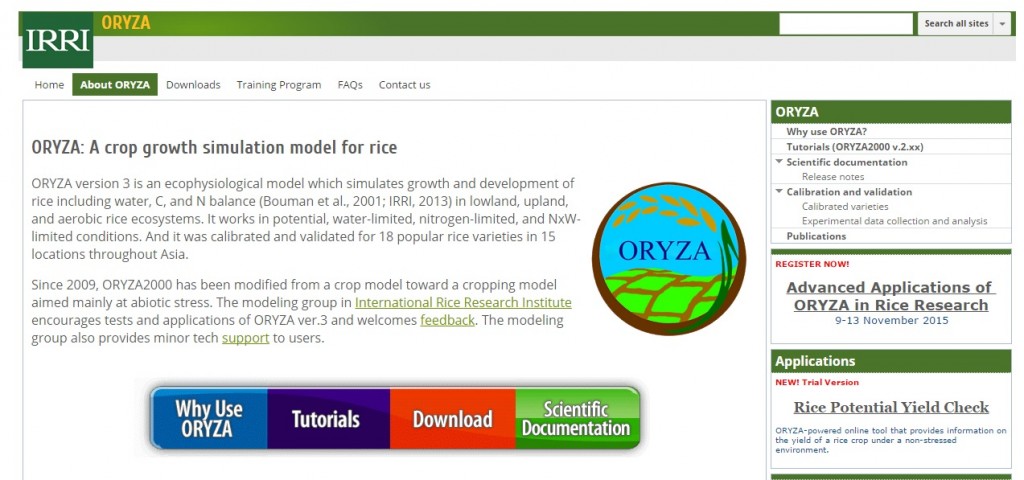
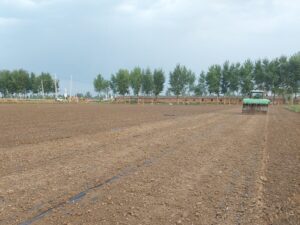
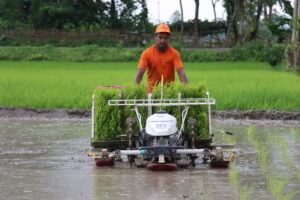
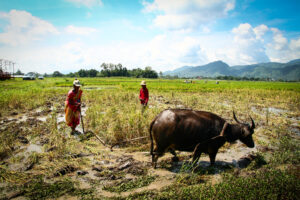
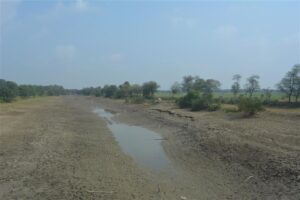
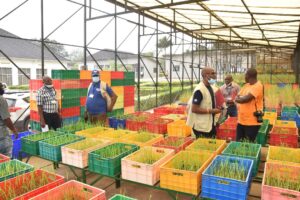
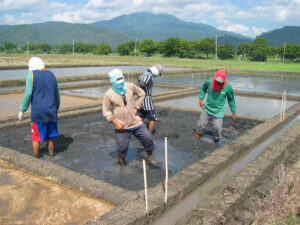
We need ORYZA Model latest version for Agroomic research
Please go to this site to download The ORYZA v3, the latest officially released version of the ORYZA crop model.
The new version is available in Windows and Linux edition:
https://sites.google.com/a/irri.org/oryza2000/downloads